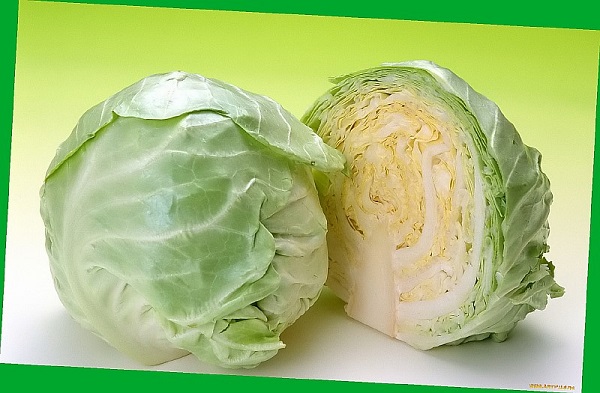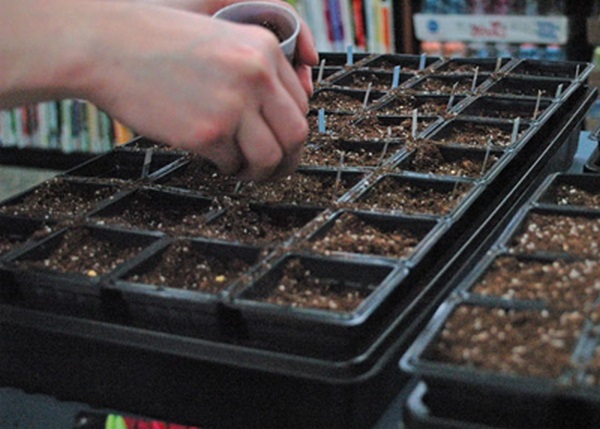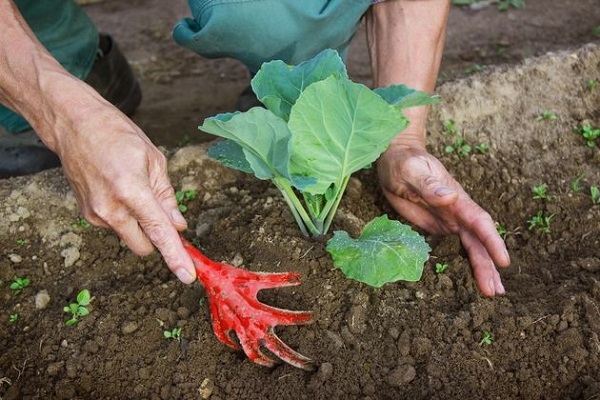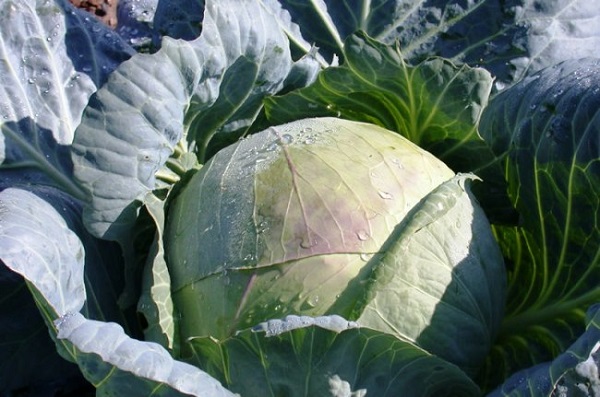Get a good harvest of cabbage in the fall can only the gardener, who responsibly react to all the requirements of a particular variety. Cabbage variety gift is an unpretentious plant that will allow you to enjoy the harvest until spring.
Table of contents
Description and characteristics of the variety
Growing any cabbage requires little effort, but always the right care. Gardeners stop their choice on a variety of a gift due to its characteristics: unpretentiousness, resistance to diseases and resistance even in late spring frosts, the absence of cracked heads.It can be planted in all regions of Russia.
Dense round or slightly flattened white forks to reach a weight of up to five kilograms. Externally, the gray-green head of the cut will be greenish-white. The socket is large, can reach a diameter of one meter. Leaves slightly raised, sprawling, smooth with a waxy coating. On the edge there is a slight waviness.

Positive qualities and disadvantages of the gift
Regarding this type of cabbage there are no disadvantages. There are only a few mandatory requirements for care: abundant watering, fertile and protection from pests. Here is a description of the advantages of the variety gift, thanks to which gardeners appreciate it:
- The ability to grow in any region of Russia.
- Frost resistance and heat resistance.
- Resistance to diseases of different types.
- Lack of cracking.
- Long shelf life of up to five months.
- It tolerates transportation, keeping the presentation.
- High yield.
- Suitable for salting and pickling.
Like any other cabbage, the gift is not protected from attack by caterpillars, so you should take time to examine the leaves as often as possible.
Planting and soil requirements
It will be good to place such predecessors on the site as the nightshade. These include tomatoes and potatoes, peppers and eggplants, pumpkin or legumes, onions. Growing produce more efficiently through seedlings. Transplantation in open ground is made on the fiftieth day.
Sowing rules
In the spring, at the junction of April and May, you can start sowing seedlings at home or even immediately into open ground for shelter, only in both cases the rules and recommendations will be different.

Planting scheme for growing seedlings 5 * 5 centimeters, no more than 1.5 centimeters in depth. The first sprouts can be seen after a week. Understand that the sprout is ready to move into the open ground is easy.If the number of these sheets reaches five pieces, then you can safely send them to the beds. On average, such a spectacle can be seen on the forty-fifth day.
Sowing in open ground is risky, but it is still possible if a woman gardener takes care of shelter for the first time. The scheme will be similar to the planting of seedlings into the soil: 60 * 60 centimeters. Prepare a place for cabbage in various ways. For example, planting in shallow trenches will allow water not to spread during irrigation, moisture will last longer.
Cabbage care
Top dressing, hilling, loosening the soil along with weeding and irrigation will allow you to gather a rich harvest, which can reach up to 10 kilograms per square meter. If the leg of the fetus begins to stretch, it can lose its taste and density of the head.
Loosening should be carried out periodically, once a week, on moist soil. The depth of loosening five centimeters. Hilling can begin three weeks after landing on the garden bed.
Watering requires careful, especially in the first two weeks - every two - three days. At least seven liters of water per square meter of land must be spent at a time.
Top dressing is an individual matter, and if a gardener chooses to avoid adding chemicals to the soil, then he will be right. This measure is not mandatory, but brings a good result. Provide a quick set of green mass forks allow "Effekton". Starting from the twentieth day after transplantation, and then another three or four times in all the time, you need to use half a liter of the finished solution for one fork. The solution is prepared according to the scheme: two tablespoons of the product per ten liters of water. As a second feed, you can use half a liter of mullein or bird droppings, diluted in ten liters of water. Also here you can add a spoon "Kemira".

Diseases and their prevention
Despite the fact that the variety is highly resistant to various types of diseases, it is still worth knowing how to contribute to a speedy recovery and their prevention. Spraying with a solution of ash, tomato or tobacco, garlic.
Cruciferous flea are small bugs and larvae that gnaw the veins on the leaves.The affected leaves dry up and die. To prevent their occurrence, it is possible, in a timely manner, to destroy weeds, to irrigate by sprinkling.
Cabbage fly lays eggs on the ground close to the stem in late May, early June. If they are not removed within a period of six days, then the hatched larvae will damage the roots and eat them around, which will lead to the death of the plant. To prevent their spreading, sprinkle the soil around the seedlings with ash, black pepper or tobacco dust, and then inject it into the soil using loosening.
Snails and slugs damage not only the ground, but also the underground part of the plant. You can determine the cause of the lesion by dried mucus and the leaves that they have eaten. A mixture of mustard, ash, ground pepper and salt in the amount of two tablespoons for each ingredient diluted in half a liter of water should be sprayed the soil between the forks. Better to do it on a hot and sunny day. In the evening, carry out the procedure, spraying the heads themselves.
The cabbage blanket or scoop lay eggs constantly, and the best factor in the fight against it will be frequent inspection of the underside of the leaves.In order to save the plant from damage, it is necessary to water it with a solution of two glasses of ash in ten liters of boiling water and one tablespoon of liquid soap.
- Cabbage Fly
- Scoop on a cabbage leaf
- Cruciferous flea on cabbage
- Snails on cabbage leaves
Harvesting
The ripeness of the fruit is reached on day 125 after the first shoots. September - October is the best period for removing the plugs. The versatility of the variety allows it to be consumed fresh throughout the winter, to cook salted or sauerkraut for the winter. One hundred grams of product contains from 26 to 41 milligrams of ascorbic acid.
High yield and simplicity in the process of growing varieties Gift attract gardeners. Compliance with the rules of care and prevention of diseases will allow you to enjoy tasty and juicy cabbage from your own garden until spring.




